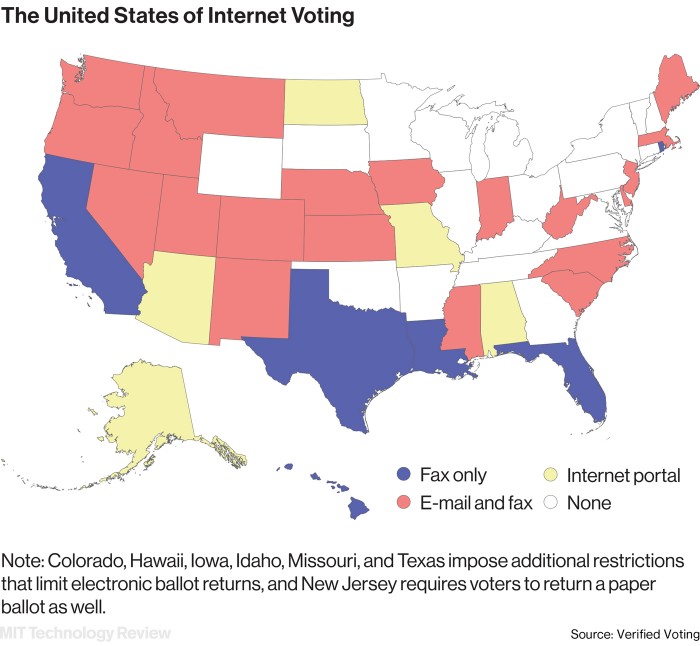These States Are at the Greatest Risk of Having Their Voting Process Hacked
Not everything belongs on the Internet, and the American electoral process is a textbook example. But 31 states don’t see it that way.
The recent cyberattack on the Democratic National Committee has raised the specter of an Internet-based assault on the democratic process in the U.S., leading computer security experts to call on the federal government to do more to protect the voting process from hackers.
Since national elections involve some 9,000 separate jurisdictions, and they use a variety of technologies, the problem at first appears to be hopelessly complex. But there is a simple way to manage the risk of cybercrime: keep voting off the Internet.

Many states are currently exposing their systems to the risk of cyberattack by allowing voters to return absentee ballots via poorly secured e-mail, Web portals, or Internet-connected fax machines.
Internet-based voting has obvious potential benefits, especially for voters who live outside the country and for people in the military. But most security experts agree that it is not technically feasible to guarantee the security of online voting systems at this point.
Congress passed a law in 2009 that made it mandatory for states to electronically deliver blank ballots to voters in the military and overseas. But it said nothing about the electronic return of completed ballots. The authors of the legislation “knew there were unsolved security issues,” says Pamela Smith, president of Verified Voting, a group that advocates for the accuracy and transparency of elections. But if the law had gone so far as to issue a blanket restriction on online voting, it may not have passed. Instead, the door remained open for more states to begin offering voters the option to return their completed ballots using the Internet.
Of the 31 states that now do this, 29 allow it only for military and overseas voters, and several of those impose fairly tight restrictions on the process, according to Verified Voting. Utah extends the option to voters with disabilities, too. Alaska allows any voter in the state to use a Web portal to return a completed ballot.
Four other states besides Alaska use Web portals. Six states, including Florida, a crucial swing state for the 2016 presidential election, allow electronic ballot return only via fax, despite the fact that many fax machines now send data over the Internet. Twenty allow at least some voters to use either e-mail or fax to deliver their ballots.
Keep Reading
Most Popular
Large language models can do jaw-dropping things. But nobody knows exactly why.
And that's a problem. Figuring it out is one of the biggest scientific puzzles of our time and a crucial step towards controlling more powerful future models.
How scientists traced a mysterious covid case back to six toilets
When wastewater surveillance turns into a hunt for a single infected individual, the ethics get tricky.
The problem with plug-in hybrids? Their drivers.
Plug-in hybrids are often sold as a transition to EVs, but new data from Europe shows we’re still underestimating the emissions they produce.
Stay connected
Get the latest updates from
MIT Technology Review
Discover special offers, top stories, upcoming events, and more.